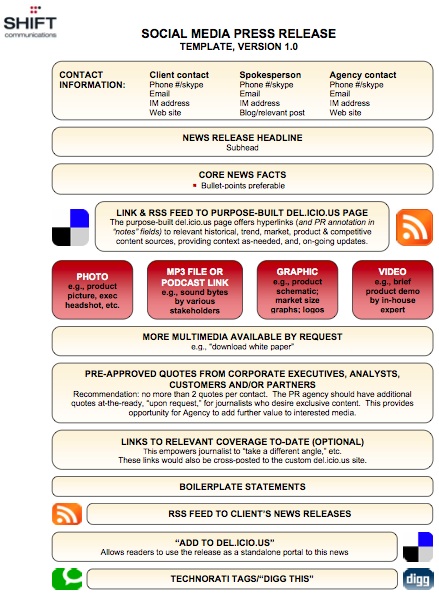Evaluation of the PR activity has always been an issue. In the book
Effective Media Relations published by the
Chartered Institute for Public Relations, Anne Gregory (2000) draws attention to the two schools of thought regarding the assessment of the public relations efforts. The first claimed the results of PR were intangible and impossible to measure. The second believed PR can be measured and looked at the number of press cuttings. A variation on the second school was to measure the cost of advertising in the media.
In the last years
offline PR has been evaluated based on the following criteria, among others (
Wilcox, 2009):
• measurement of advertising value equivalency - based on the size and position of an article in a media outlet
• measurement of media impressions – number of people exposed to the article and the messages given by circulation or readership
• measurement of key messages – counting how many pre-established messages were actually included in the articles
• measurement of production - total number of generated articles in a given period and the number of publications reached
• measurement of editorial slant – analyzing tone of voice: positive, neutral or negative
• event attendance – number of people attending an event
Although these are still not totally satisfactory methods they have been doing their job so far.

But PR is now moving towards
online and the evaluation methods have to do the same.
Blogs, Twitter, Facebook, YouTube are the most common social media and assessment of online PR can be done for each one separately, as presented below. I underline that both quantitative and qualitative evaluation can be made for social media.
Metrics for blog (one can use
Google Analytics for blog metrics)
:• no of visitors
• no of unique visitors
• page views
• bounce rate
• average time spent on blog
• no of comments
• no of followers
• no of track-backs to blog
Metrics for Twitter:• no of followers
• influence of followers
• no of company/brand/etc mentions
• no of direct messages
• attitude of tweets: positive, negative, neutral
• no of re-tweets
Metrics for Facebook fan page:• no of fans
• no of “likes”
• no of comments
• general tone of comments: positive, negative, neutral
Metrics for YouTube channel:• no of channel views
• no of views for individual video
• no of comments
• type of comments: positive, negative, neutral
• subscribers to channel
• ratings
Websites are also used in online PR even though I think they are not so much of a novelty. :) I will however list some
metrics for websites:
• no of visitors
• no of unique visitors
• page views
• bounce rate
• average time spent on website
Besides the above metrics, PR pros can also determine some
“returns” as presented by
Brian Solis. He wrote about four ways to assess social media efforts:
• return on participation – measuring the time spent for engaging in social media e.g conversations
• return on involvement – evaluating touchpoints
• return on attention –seize, hold and measure attention in terms of produced responses activities
• return on trust – measuring loyalty and referrals
The online
Kit Kat Jesus campaign is a great example of a high return on participation, involvement and attention. :)















